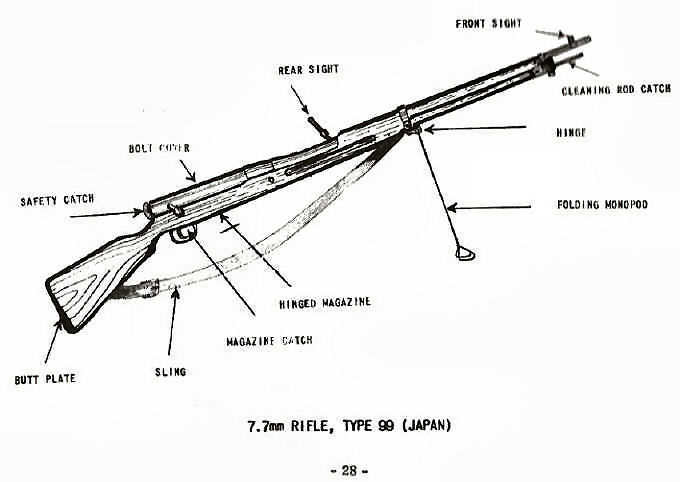As pointed out throughout the small arms section, at the conclusion of WWII, the Chinese and North Korean Communists inherited large quantities of Japanese weapons from the Soviets, who had taken them in Manchuria/Korea.
North Korea began its assault on the South well-armed with Soviet weapons like the PPSh M-1941 7.62mm submachine gun (burp gun), supplemented substantially by these Japanese weapons. The Chinese had captured large numbers of weapons from the Nationalists, mostly 7.92mm, but including large numbers of US weapons, .30 cal, .45 cal. and .50 cal, as well as Japanese weapons. When China entered the Korean War, they were mostly armed with these weapons with very few Soviet weapons, and were very inferior to the NK in that respect. Both CCF and NK troops were hardened veterans, and of course the CCF had far larger numbers.
The 6.5mm Meiji 38 was the standard Japanese infantry weapon in WWII. Experiences in the Sino-Japanese fighting in Manchuria, in the 1930s, led to the opinion that the 6.5mm bullet was insufficiently lethal and that a heavier cartridge was therefore desirable. In 1932, a machine-gun had been introduced firing a semi-rimmed round called the Type 92, and this cartridge was redesigned to a rimless form known as the Type 99.
The 7.7mm Type 99 (1939) rifle was little more than a re-chambered version of the earlier Meiji 38, although the opportunity was taken to produce a short rifle in line with the weapons of contemporary armies abroad, and to redesign the components to make manufacture less exacting. The Type 99 was remarkable for being fitted with a flimsy wire monopod and a most optimistic sighting device (consisting of folding lead bars on the rearsight) intended for use against aircraft!
Two issue weapons still in use in the Communist Chinese militias are the 7.92 Mauser called the Type 79 Generalissimo and the Japanese Type 99 in 7.92.
The 7.92 Mauser was apparently used by the CCF in Chosin, at least against Fox Company at Toktong Pass. One was reported as being a 1918 Mauser manufactured in China, and was apparently very well made and an effective weapon for snipers.



